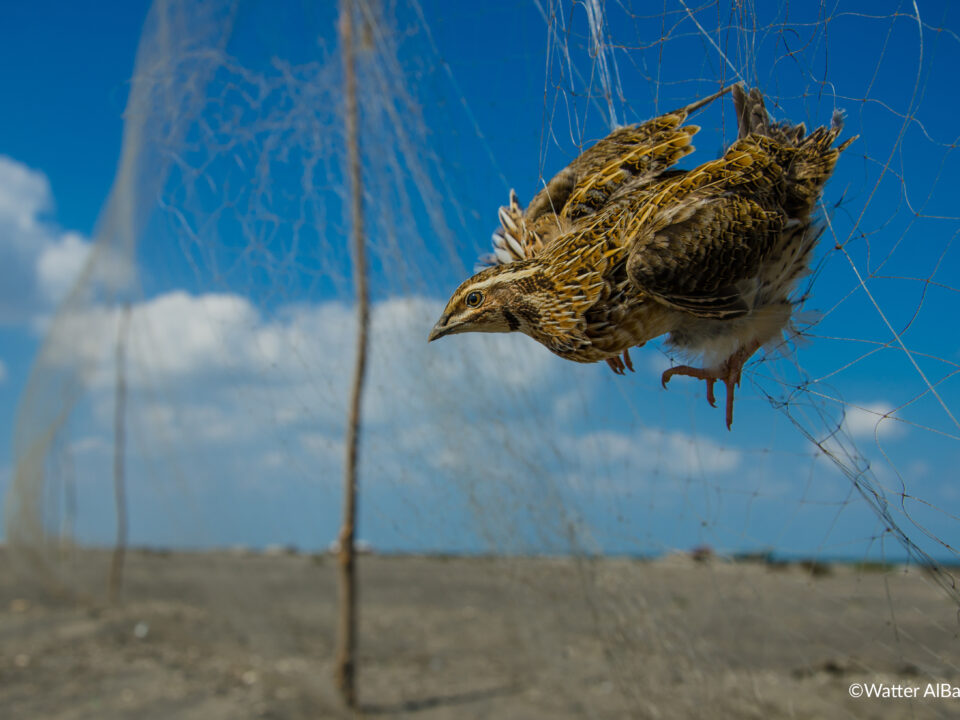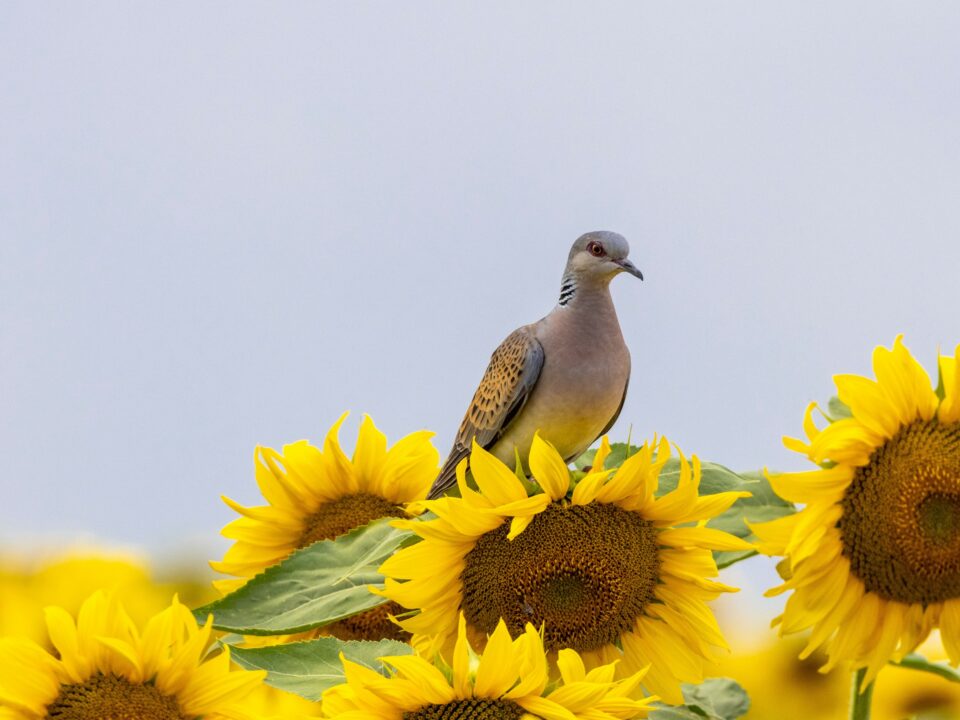
Hunting, harvesting and persecution
by Jess Williams, Conservation Officer, Global Flyways Programme, BirdLife International; Wim Van den Bossche, Senior Flyway Conservation Officer, BirdLife Europe & Central Asia and Vicky Jones, Flyways Science Coordinator, BirdLife International
Evidence of hunting, harvesting and persecution of wild birds dates back to the earliest of human societies. However, as human populations have grown, and technologies have advanced, the exploitation of wild birds has increased dramatically. Hunting and trapping is the second biggest threat to migratory bird species (1) and one of the most prevalent threats to bird species globally (2).
The removal of birds from the wild occurs worldwide, with significant differences in scale, methods and motives among regions. Bird species are killed or taken as adults, juveniles or eggs, both legally and illegally, and for a variety of reasons, including food, recreation, caged pets, persecution as perceived ‘pests’, decoys to lure other birds, taxidermy, religious ‘merit release’ and other belief-based uses. Money is a major driver, with many bird species being traded for profit, but cultural traditions and beliefs also drive aspects of exploitation.
Overexploitation and illegal killing of birds can have a significant impact on wild bird populations, and has famously driven several species to extinction, including the Passenger Pigeon, Carolina Parakeet, Great Auk and Dodo. It is estimated that one in four avian extinctions since 1500 were the result of hunting pressure (3), and today extinction looms for many species affected by overexploitation. Yellow-breasted Bunting has gone from being one of the most abundant passerines in Asia to Critically Endangered in just ten years, mainly due to hunting pressure (4).

Bee-eater – Nature Conservation Egypt
Migratory birds may be exploited on their breeding grounds, on passage and/or in their non-breeding areas, and the cumulative impact can be unsustainable. Around 2,000 of the world’s 11,000 bird species are regular migrants. Each year, they follow long-established routes between their breeding and wintering grounds, congregating at traditional sites or funneling predictably through narrow geographical corridors (‘bottlenecks’), making large-scale killing possible.
BirdLife International has exposed the illegal mass killing of birds across the Mediterranean (5), the Arabian Peninsula (6), and Northern and Central Europe and the Caucasus (7). Similar studies are underway in South-East Asia and Sub-Saharan Africa. Every year, in the Mediterranean region alone, an average of 25 million birds are unlawfully shot, trapped or poisoned, from the smallest songbirds to the most powerful birds of prey. Threatened species, already hit hard by habitat loss and climate change, are being pushed closer to extinction.
On the other side of the planet, hunting and harvesting are also decimating populations of some endemic sedentary bird species. Relentless demand is driving poachers to empty South-East Asia’s forests of their songbirds, bringing dozens of species to the edge of extinction. On the island of Java, for example, it is now thought there are more songbirds in cages than in the forests (8).
BirdLife is combatting unsustainable exploitation and persecution of birds in all its forms, working with others including policy instruments like CITES and CMS through intergovernmental task forces on illegal killing, unsustainable hunting, taking and trade. On-the-ground interventions include targeting the root causes of overexploitation – be they economic, criminal, cultural or due to a lack of education and awareness about the conservation impact.
With Partners in 115 countries, BirdLife International is actively engaged in improving legislation, strengthening enforcement efforts and providing sustainable alternatives to reduce, and ultimately end, the unsustainable exploitation of wild birds globally.
All of these topics and more are covered in this month’s second centenary collection of BCI papers, made freely available by Cambridge University Press for a limited period to mark the 100th anniversary of BirdLife International. The release of this particular collection coincides with the 5th Meeting of the Intergovernmental Taskforce on Illegal Killing, Taking and Trade of Migratory Birds in the Mediterranean (MIKT), which takes place in Valencia, Spain, on 7-9 June 2022.
References
- Kirby, J. (2010) Review of current knowledge of bird flyways, principal knowledge gaps and conservation priorities. CMS Scientific Council: Flyway Working Group Review. Unpublished.
- Lees et al. (2022) State of the World’s Birds. Annual Review of Environment and Resources 47.
- Harfoot et al. (2021) Using the IUCN Red List to map threats to terrestrial vertebrates at global scale. Nature Ecology & Evolution 5: 1510-1519.
- BirdLife International (2022) Species factsheet: Emberiza aureola. Downloaded from http://www.birdlife.org on 05/05/2022.
- Brochet et al. (2016) Preliminary assessment of the scope and scale of illegal killing and taking of birds in the Mediterranean. Bird Conservation International 26: 1–28.
- Brochet et al. (2019) A preliminary assessment of the scope and scale of illegal killing and taking of wild birds in the Arabian peninsula, Iran and Iraq. Sandgrouse 41: 155-175.
- Brochet et al. (2019) Illegal killing and taking of birds in Europe outside the Mediterranean: assessing the scope and scale of a complex issue. Bird Conservation International 29: 10-40.
- Marshall et al. (2020) Spatio-temporal dynamics of consumer demand driving the Asian Songbird Crisis. Biological Conservation 241: 108237.



